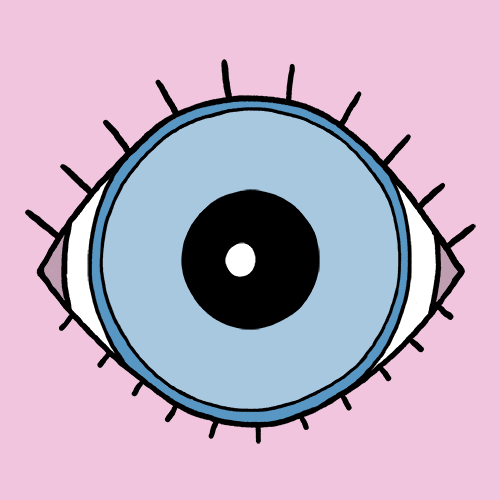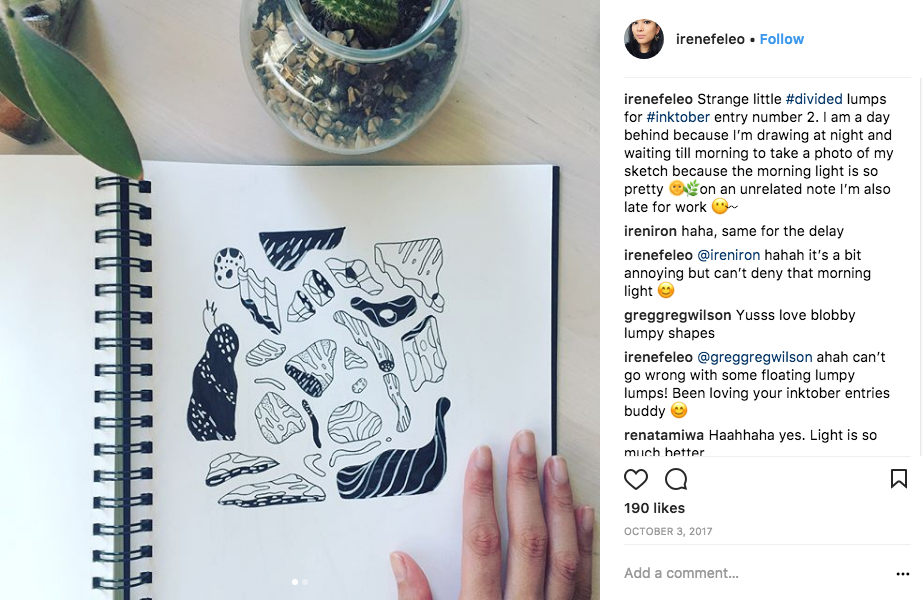Ep 3: How to find your illustration niche with Irene Feleo
In this episode, we come back with Illustrator and Animator Irene Feleo on the topic of how to find your niche as an artist. This is the last episode in our 3-part series on finding your unique style so customers and clients can start to recognize your work.
When do you think you were producing work in your style?
Although Irene can’t always see a consistent style in her work, people always tell her that they can recognize her art through the color palette and weird subject matter she uses. She feels flattered that people even remember her in the first place, let alone become well known enough to have a consistent style people can spot.
I mention that lettering artists usually start out looking the same with some innate talent built in, where they practice enough to have their technical skills match the ideas they have in their head.
Irene says “When you first start doing creative work it's going to suck, and you know it sucks because you have taste.” It’s only when you start to create poor work without knowing it’s terrible is when you have a problem because you can’t always teach taste.
How to figure out your illustration niche
There is a big difference between figuring out your niche and style. A style is about the ascetic of your work, and your niche has more to do with the specific services you offer. Irene says that you should figure out what you enjoy doing by trying it for awhile to see if you like enough to do it every day.
For example, Irene loved the thought of doing mural work because it gave her the opportunity to see her work in large outdoor spaces. Just to find out that she actually hates the outdoors and only wants to work in the comfort of a temperature controlled office.
From teaching, I created a set list of questions to help you figure out your niche as an illustrator so people can better understand the value you offer. To help Irene figure out her niche, I asked her this list of questions and got a pretty impressive answer.
What kind of industry would you like to work in?
An industry can be things like entertainment, apparel, automotive, publishing, and advertising to name a few. These are the kind of clients you would ideally like to provide a service for.
Irene decided on entertainment, but I wanted to figure out the exact subsection of the entertainment industry she wanted to be apart of whether it was ads, documentaries, or short stories. Although she works mostly in advertising, she likes the idea of helping people and brands tell stories whether it’s for fiction or is more autobiographical. She uses the project she is working on now called Project Girl, which is a series of personal short stories told by young women.
Anytime you don’t know what rabbit hole to go down for your illustration career, ask yourself what you like and why. Drill down the why’s a few times until your purpose becomes clear. Doing this will not only help you clarify a career path, but it will also keep you in check to make sure that you choose a job you actually enjoy.
What's your medium of choice?
Your medium is the tools you choose to create your illustration work whether they're traditional or more digital. Figuring this out can help you explain your process to future clients and employers so they can understand how you do your best work.
Irene's tools of choice are Photoshop and After Effects where she uses traditional brushes that have more of a textured handmade feel.
What kinds of subject matter are you attracted to?
Your subject matter is what you like to draw. When I asked Irene about her style she initially answered by just telling me about the weird and whimsical themes she loves explores in her work, rather than going into detail on the service she provides.
By digging deeper into this question, Irene realized that she always has a sense of magic in her work where there is still a common theme of surrealism like floating heads, magical eyes, plants, and potions.
What kinds of services do you like to offer?
All too often do artists use very broad terms like animation and illustration to describe what they do, but that’s not very specific. You have to find a way to explain what you do to a person who doesn't have an artistic background so they can just get it.
For Irene, she wants to be a storyteller for animation and illustration. So if we drill down to find the exact service niche, it makes sense for her to do editorial illustration and supporting animations for video production in the entertainment industry.
Why does all this matter
t’s hard enough trying to get people to understand what you do for a living in person, let along on a static website where they can’t instantly get more info from you. These terms you're coming up with help people find you through search engines when they type in the illustration niche there looking for.
How to get more of the work you want
Like most new artists, we take on any client projects that comes along because we need the money whether it’s in our wheelhouse or not. If I could go back in time, I would have skipped college altogether, got a retail day job to pay my bills, and only done freelance projects I wanted to do more of.
You have to be careful of what you put in your portfolio and focus more on quality than quantity. Don’t show any projects that made you compromise your value, or style unless you want to do more of that work. This is why it’s so important to find your niche. Because once you do, you know what kind of passion projects you need to work on to be hired for that exact type of work that you want.
Every single artist is going to evolve with their style and interests over time naturally. As long as you consistency update your website and post on social media, your following will naturally grow with you.
Irene Feleo
Illustrator & Animator
Up Next: How to create your own opportunities as an artist
Next week we come back with a new artist and 3-part series on how to find your independence and success as a female artist so you can make a rewarding living from your work. I talk with Illustrator Samantha Lopez on how she started to get noticed by companies like Valfre and Hoodzpah to get her start in the design industry.








